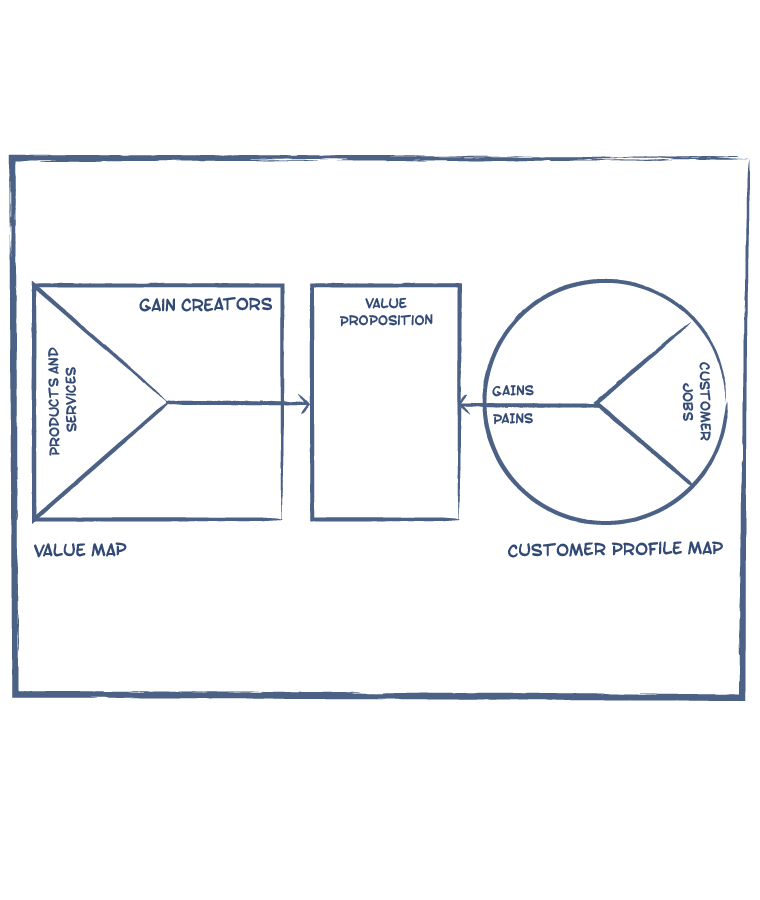HUMAN CENTERED DESIGN | DEFINE
Value Proposition Canvas
90-120 Min
Value Proposition Canvas is a tool which helps ensure that a product or service is designed for what customers value and need. The Canvas in a sense helps develop the product-market fit. It is a complementary tool to the Business Model Canvas, and looks at two parts of that tool specifically — customer segments and value proposition.
USE CASES
- Define a new product or service offering being developed from scratch, through the lens of customer needs.
- Refine an existing product or service offering through the lens of what customers need and value.
LIMITATIONS
Each customer profile/segment may need a unique value proposition. An overall proposition which is a combination of all the different versions may not be easy to define. Designers have to prioritise at some point.

